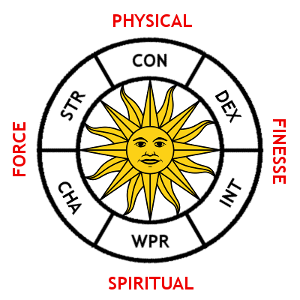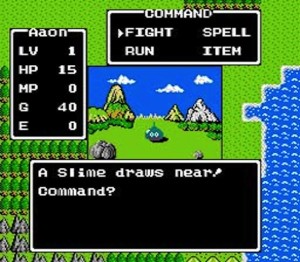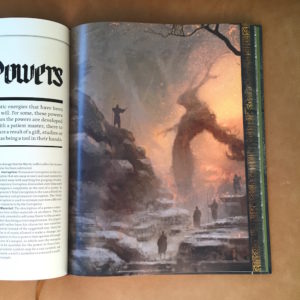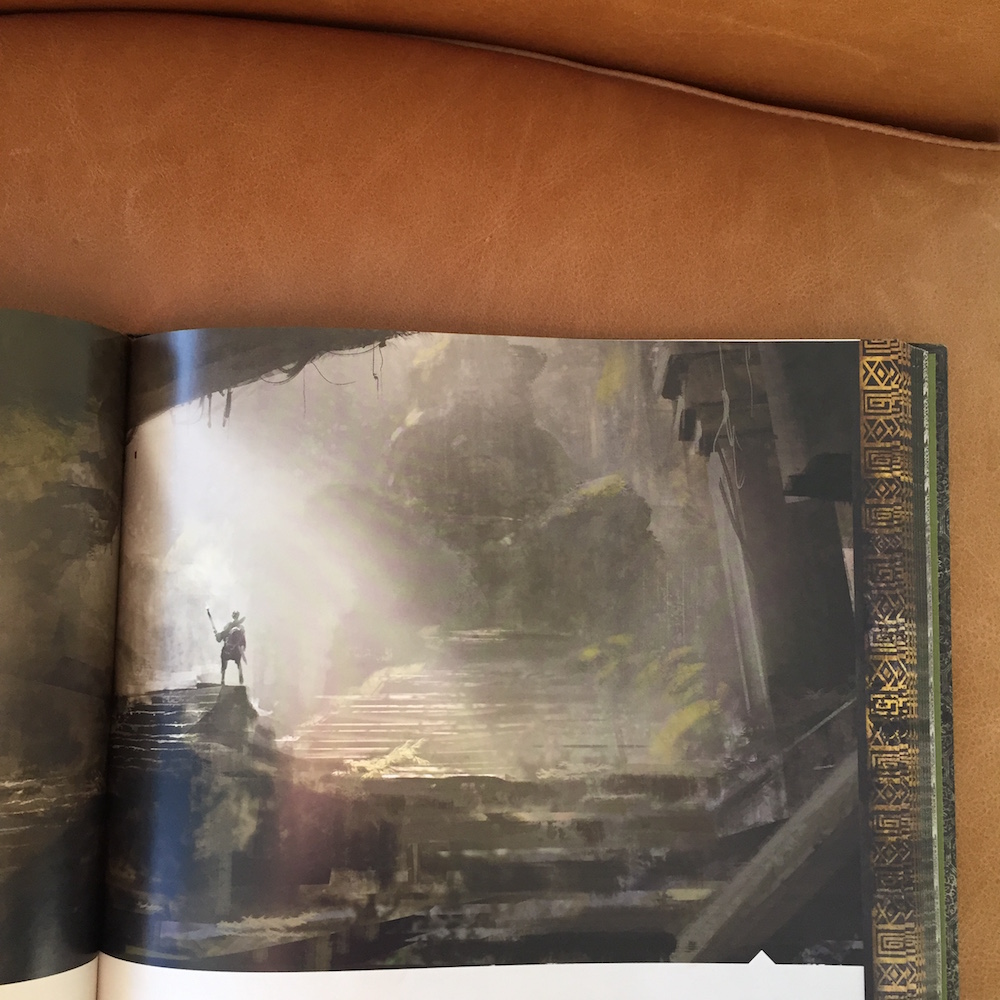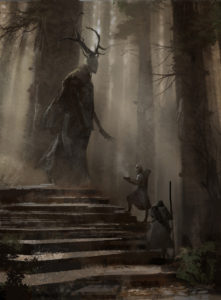On G+, Ian B. has regularly mentioned his house rules for ability scores. Whenever he has, I have been impressed by the elegance of his approach. He views the six ability scores as divided between physical and spiritual domains and encoding several underlying properties: power (strength/charisma), finesse (dexterity/intelligence), and durability (consitution/wisdom). Further, each individual ability score has application to many other concepts, including character class, saving throws, weapons, and social caste.
Recently, he posted an extra-thorough description of the system. I thought it would be a shame if the exposition was buried in a G+ comment thread rather than easily available using web searches, so I am publishing it here as a guest post. Below the horizontal rule are Ian’s words, used with permission, lightly edited for blog post form. Find the original text in a comment on this G+ post.
I arrange the attributes in a circle. In the upper half (left to right) are Strength, Constitution, and Dexterity. these are the physical abilities. In the bottom half reading from right to left is Intelligence, Willpower, and Charisma, These are the spiritual attributes. They reflect the nature of the physical attributes above them. This makes it very easy for players to identify the role the attributes play because they can compare the more abstract spiritual quantities to more physical representations.
[Incidentally, this is one of the reasons I renamed Wisdom Willpower. It made sense in OD&D because the first three abilities represented the native ability of the three classes (which is why they were tradeable). So Strength might as well be called Fighting-Man Ability, Wisdom could be called Cleric Ability, and Intelligence called Magic User Ability quite easily. The other three abilities were discrete supporting abilities common to every “figure” (and characters were still really figures on the battlefield in many senses in that first version). But when people started thinking the names of the attributes were significant and they started having their own application outside that of the character xp gain (that is, in Greyhawk), then you started getting confusion over what Intelligence and Wisdom meant to many people. This avoids the confusion by what I mean when I say Willpower.]
Actions taken to the left of the diagram involve the use of physical or spiritual force. So wrestling might involve a contest of Strength, whilst an argument might involve a contest of Charisma to see how well it sways people emotionally.
Actions taken to the right of the diagram involve the use of physical or spiritual finesse. Such as accurately hitting a target or negotiating an agreement.
Very few intentional actions can be taken using the middle of the diagram (Constitution and Willpower). Mainly they provide the intrinsic resilience of the character (the ability to endure physically and spiritually). They boost both hit points and spell points respectively.
Each Saving Throw maps directly to a characteristic (even though this does mean adding an extra one), which provides a bonus. They are:
- STR: Paralysis and Petrification
- CON: Death and Poison
- DEX: Blast and (Dragon) Breathe
- INT: Magical Devices (formerly Wands & Staves)
- WPR: Spells and Magic
- CHA: Fear and Charm
Where multiple saving throws might apply characters may select a specific one by reacting appropriately. For example against a wand of paralysis they could seek cover from the wand wielder (INT), dodge the caster pointing the wand at them (DEX), attempt to actively resist the magic itself (POW), or passively resist the effects of the magic (STR). (Brendan here: note the POW intrusion from RuneQuest.)
Each of the primary six adventurer classes is directly connected to each of the characteristics as their prime requisite.
- STR: Fighter [melee specialist]
- CON: Ranger [missile specialist]
- DEX: Tomb Robber/Dungeon Explorer [still flipping between class names because I don’t really want to use Tomb Raider] (Brendan here: presumably this is the thief class analogue.)
- INT: Warmage [D&D magic user]
- WPR: Sorceror [closest analog is the 5E Warlock. I may just change the name to Warlock since Mages normally use sorcery rather than wizardry (which is something quite different)]
- CHA: Demon Hunter [D&D cleric except without a divine connection; they use antipathetic magic rather than the sympathetic magic of magic users]
This not only strongly affects abilities central to the class but because abilities increase each level (and a random prime requisite increases every odd level they get the maximum boost in their prime requisite). Incidentally I start PCs off at 2nd level (“normal” people have a level of between 1 and 4).
Player character generation is also tied into the characteristics, with players either selecting or rolling their Birth Caste, which gives a bonus to the related characteristic.
- STR: Military Caste (2/3 [depends on culture])
- CON: Peasant Caste (5)
- DEX: Artisan Caste (4)
- INT: Religious Caste [ie Educated] (2/3)
- WPR: Outcaste (6)
- CHA: Aristocratic Caste (1)
“(#)” indicates hierarchy rank. Note that 95% of the people in the wold belong to the Peasant Caste and may actually serve in other castes. So a common soldier is Peasant Caste (albeit more privileged by their association with sharp pointy things), whilst a knight would be Military Caste.
The other major philosophy in my current home system is that spellcasting and fighting abilities for the basic classes are at opposite ends of the spectrum. So if your class gives your d10 hit points (a fighter) then you would get d4 spell points. The reverse is true for a magic user. [It used to be offset slightly to match the initial D&D spell allocations (for instance an average cleric had a 50% chance of being able to cast a first level spell each day (1d6 spell points and costs 4) which was a nice compromise between early editions I thought, but I want to get players using their casual abilities more.]
The hit points die is also the base physical damage a class does (although it actually works out closer to the types of weapon the class can actually wield. For example a mage with a +1 Strength bonus could wield a shortsword in one hand rather than just a dagger. [Bonuses from abilities always increase a die roll – bonuses from magic are always added to a die roll.] A fighter armed with just a dagger is still only going to do d4 damage although they are much more likely to cause it. On the other hand at the upper end of the scale it can start getting complicated as fighters trade damage boost for increased utility with the weapon.

